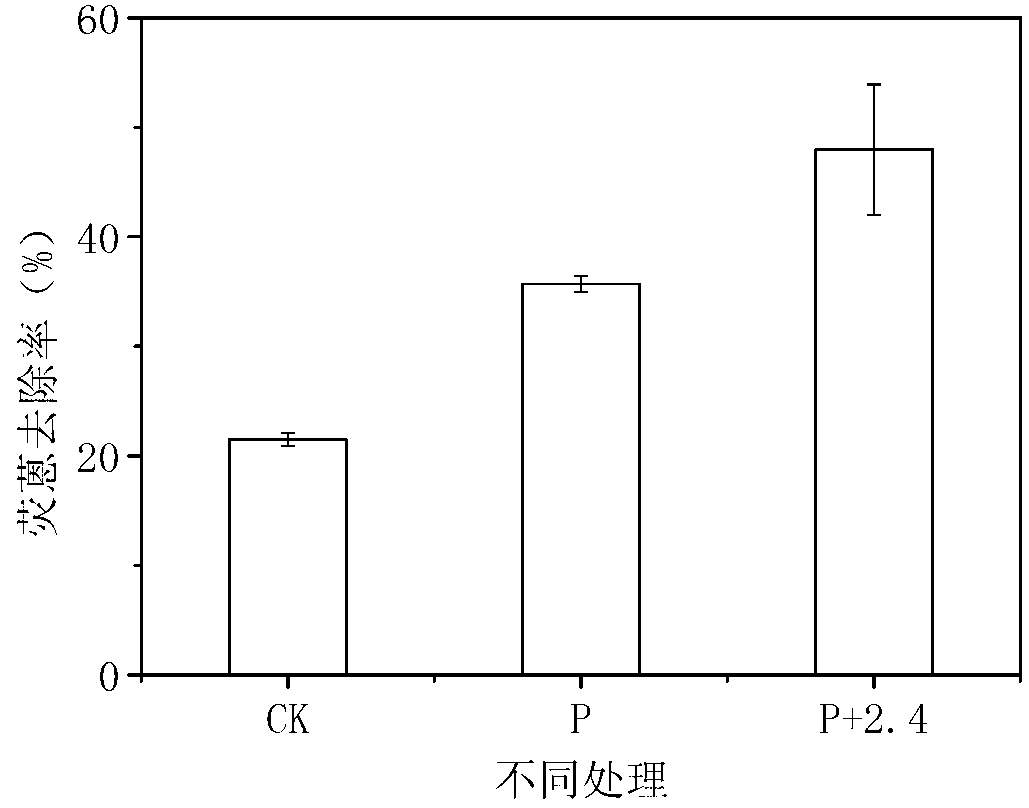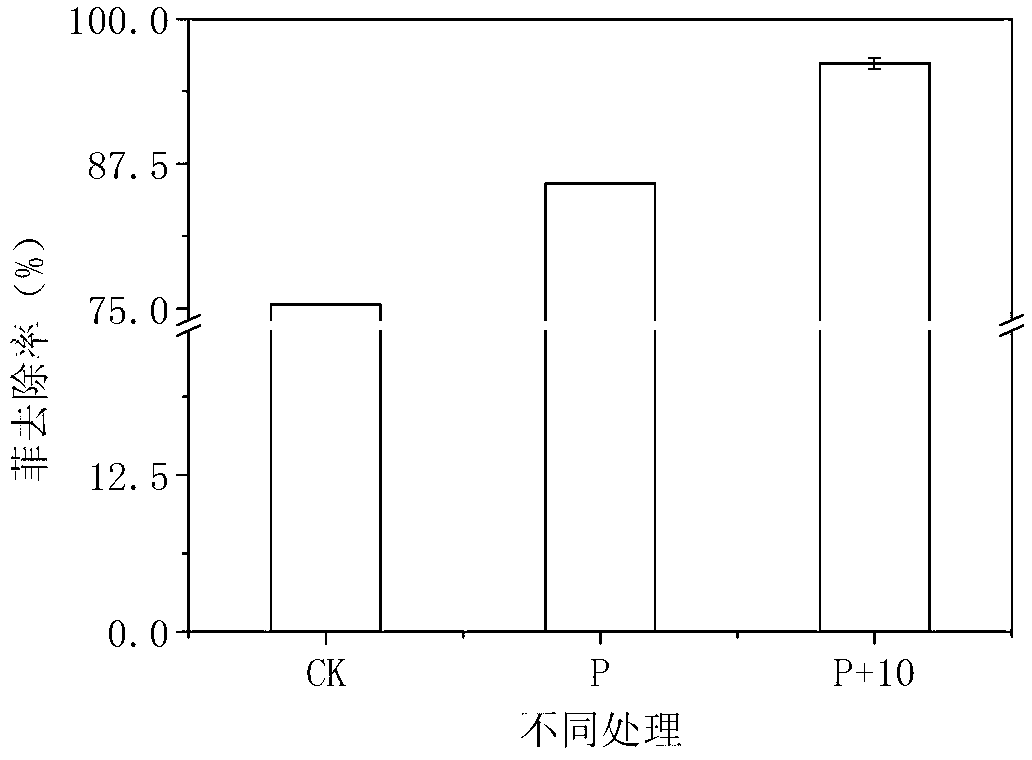Application of heteroauxin in strengthening phytoremediation of polycyclic aromatic hydrocarbon contaminated soil
A technology of indole acetic acid and polycyclic aromatic hydrocarbons, which is applied in the field of contaminated soil remediation, can solve the problem of low efficiency of phytoremediation technology, and achieves the effects of low cost, simple technical process and good remediation effect.
- Summary
- Abstract
- Description
- Claims
- Application Information
AI Technical Summary
Problems solved by technology
Method used
Image
Examples
Embodiment 1
[0022] Embodiment 1 (hydroponic experiment):
[0023] Dissolve a certain amount of fluoranthene pollutants directly in the aqueous solution to prepare a fluoranthene aqueous solution with a final concentration of 0.265mg / L (25°C), and keep it in a dark place for later use. 10% H for ryegrass (Lolium multiflorumlam) seeds 2 o 2 Soak for half an hour, and when the ryegrass grows to about 10 cm, it is fixed in the fluoranthene aqueous solution. A total of four treatments were set up, namely Flu treatment (without adding IAA and not planting ryegrass), Flu+IAA treatment (only adding IAA without planting ryegrass), Flu+P treatment (only planting ryegrass without adding IAA) and Flu +P+IAA treatment (both planting ryegrass solution and adding IAA). After 8 days, water samples and ryegrass were collected for measurement and analysis to evaluate the restoration effect.
[0024] After 8 days, the reduction rate of total fluoranthene in each treatment medium was as follows: figure ...
example 2
[0025] Example 2 (soil cultivation experiment):
[0026] Dissolve fluoranthene in acetone solvent and mix evenly into 1000g of soil to make the concentration of fluoranthene reach 200mg / kg. Three treatments were set up, namely: CK treatment, P treatment of planting ryegrass and P+10 treatment of planting ryegrass and adding 2.4mg / kg IAA. Select uniform and plump ryegrass seeds, soak them in distilled water for 12 hours, select seeds with consistent dew and whiteness, sow them in P treatment and P+10 treatment pots and cultivate them, adjust the soil water content to 60% of the maximum water holding capacity, and cultivate them in the greenhouse three months. During this period, IAA was configured as 100 mg / L methanol (methanol content ≤ 1‰) aqueous solution and evenly sprayed on the soil surface treated with P+10. For treatment, add an equal amount of distilled water methanol solution (methanol content ≤ 1‰). After 90 days, the removal rates of fluoranthene in soil treated ...
example 3
[0027] Example 3 (soil cultivation experiment):
[0028] Add the acetone solution of phenanthrene to 100g of soil, let it stand overnight in a dark place with ventilation, and then mix it with 400g of non-polluting soil to make the final concentration of phenanthrene reach 100mg / kg (25°C). Three treatments were set up, namely: CK treatment, P treatment of planting ryegrass and P+10 treatment of planting ryegrass and adding 10mg / kg IAA. Select uniform and plump ryegrass seeds, soak them in distilled water for 12 hours, select uniform and white seeds and sow them in P and P+10 treatments, adjust the water content to 60% of the maximum water holding capacity of the soil, and cultivate them in an incubator for one month. During this period, IAA was configured as 0.075mg / L methanol (methanol content ≤ 1‰) aqueous solution and evenly sprayed on the surface of P+10 treated soil. In order to avoid natural degradation of IAA, the method of adding three times was adopted, CK treatment a...
PUM
 Login to View More
Login to View More Abstract
Description
Claims
Application Information
 Login to View More
Login to View More - R&D
- Intellectual Property
- Life Sciences
- Materials
- Tech Scout
- Unparalleled Data Quality
- Higher Quality Content
- 60% Fewer Hallucinations
Browse by: Latest US Patents, China's latest patents, Technical Efficacy Thesaurus, Application Domain, Technology Topic, Popular Technical Reports.
© 2025 PatSnap. All rights reserved.Legal|Privacy policy|Modern Slavery Act Transparency Statement|Sitemap|About US| Contact US: help@patsnap.com



